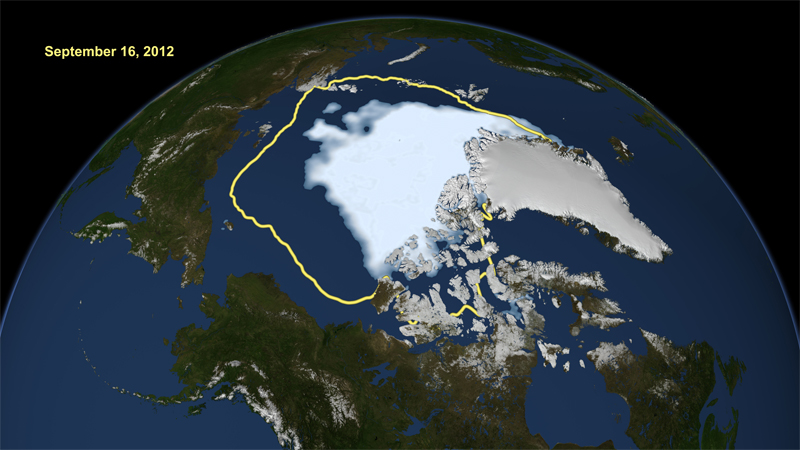It is no longer a matter of 50 years, but more likely 20 years before the ice disappears in the summer.
Seasonal variations are great, but this year the sea ice distribution reached a record low point of 3.4 million km2 in September. This was the smallest extent since satellite measurements began 33 years ago, and during this period 50 percent of the ice in the Arctic Ocean has disappeared (National Snow and Ice Data Center, Colorado). The ice has also become thinner, and since almost all the ice in the Arctic Ocean is now annual ice (<2 m thick), everything can melt in one summer if it becomes extra warm.
Move or disappear for species in the ice ecosystem
Much of algae and animal life in the Arctic Ocean is dependent on sea ice, and this will suffer serious consequences if the ice disappears. Although the ice returns in winter, this will happen later and a large part of the year will probably have no ice cover. For the ice-associated species this means move or disappear! They can move into the water, to the bottom, or to land. There they must compete with those species that are already there (including us) and who are well adapted to these environments. The large populations of Arctic species will be greatly reduced.
Dramatic changes in production
If the ice disappears, the ice ecosystem will collapse in early summer and must be recover with the individuals who have survived in the sea or on land over the summer. This must take place before three months of darkness. Ice algae bloom under the ice in early spring and represent an early and nutritious food source for both zooplankton and benthos. As it is expected that the ice will melt earlier and that it will have more snow cover, much of this important food resources will be gone.
Southern species expand – Arctic species are displaced
After ice algae, blooms of phytoplankton follow. Blooms along the ice edge consist mostly of large diatoms, but in open water, they are more characterized by small algae species. Zooplankton that feed on these will also be affected in that warmer water will bring in southern species that contain less fat (energy) than the Arctic species. Small copepods and krill are expected to increase at the expense of the Arctic crustacean species. Capelin and herring, which feed on this kind zooplankton, will also spread northward.
Reduced food supply for fish and birds
Below the ice there are specially adapted crustaceans, called ice amphipods (see photo). Divers have collected samples of them from the ice north of Svalbard since the mid-1980s. The densities of ice amphipods have been significantly reduced, especially in recent years. When the ice disappears, they must survive in the water column or on the bottom until the ice returns – if it returns. Since these animals are also food for animals higher up the food chain, a reduction in the biomass leads to a reduced food supply.
Animals on top of the ice must move
Sea ice is an important habitat for polar bears, seals and walruses, and the ice edge is an important feeding area for seabirds. The distance between land and the ice edge is growing, and we have seen that polar bears have to swim far to find ice. Ringed seals give birth in snow caves on the ice. With less ice and poor snow conditions, these will more easily fall prey to polar bears, and this may be the reason why polar bears around Svalbard are fatter than ever. Unfortunately, they are eating their long term food supply. Seabirds going to the ice edge to graze will change behaviour when it is too far to fly, and will prefer looking for food locally in front of glaciers in Svalbard. Competition for food will thus become tougher in these limited areas.
Implications of further warming
The ice ecosystem in the Arctic will change when the ice disappears in summer, towards a pelagic ecosystem of open water, more similar to that in the North Atlantic. The Arctic marine ecosystem as we know it will be history. The international community is unwilling to do much about the causes of global warming. If we are to avoid further warming, also after the ice has disappeared, action must be taken to reduce greenhouse gas emissions, both nationally and globally.
Feature article by: Haakon Hop, marine biologist/senior researcher and Nalân Koç, reseach director, the Norwegian Polar Institute.
